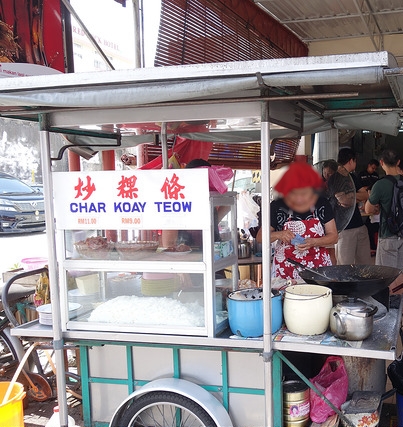|
Speak Hokkien Campaign
Speak Hokkien Campaign () is a social movement dedicated to the language revitalization of the Hokkien language. The campaign was launched online by some Hokkien speakers from Penang, Malaysia, and is committed to maintaining and expanding the use of Hokkien. The name was chosen to contrast with the Speak Mandarin Campaign, which is a Singaporean government program meant to encourage Chinese Singaporeans to speak Mandarin instead of Hokkien. See also * Hoklo people * Hokkien culture * Hokkien architecture * Written Hokkien * Hokkien media * Southern Malaysia Hokkien * Penang Hokkien * Taiwanese Hokkien Taiwanese Hokkien ( , ), or simply Taiwanese, also known as Taigi ( zh, c=臺語, tl=Tâi-gí), Taiwanese Southern Min ( zh, c=臺灣閩南語, tl=Tâi-uân Bân-lâm-gí), Hoklo and Holo, is a variety of the Hokkien language spoken natively ... * Medan Hokkien * Singaporean Hokkien * Amoy dialect * Lan-nang-ue (Philippine dialect of Hokkien) * Protection of ... [...More Info...] [...Related Items...] OR: [Wikipedia] [Google] [Baidu] |
Social Movement
A social movement is either a loosely or carefully organized effort by a large group of people to achieve a particular goal, typically a Social issue, social or Political movement, political one. This may be to carry out a social change, or to resist or undo one. It is a type of Group action (sociology), group action and may involve individuals, organizations, or both. Social movements have been described as "organizational structures and strategies that may empower oppressed populations to mount effective challenges and resist the more powerful and advantaged elites". They represent a method of social change from the bottom within nations. On the other hand, some social movements do not aim to make society more egalitarian, but to maintain or amplify existing power relationships. For example, scholars have described fascism as a social movement. Political science and sociology have developed a variety of theories and empirical research on social movements. For example, some resea ... [...More Info...] [...Related Items...] OR: [Wikipedia] [Google] [Baidu] |
Written Hokkien
Hokkien, a variety of Chinese that forms part of the Southern Min family and is spoken in Southeastern China, Taiwan and Southeast Asia, does not have a unitary standardized writing system, in comparison with the well-developed written forms of Cantonese and Standard Chinese (Mandarin). In Taiwan, a standard for Written Hokkien has been developed by the Ministry of Education including its '' Dictionary of Frequently-Used Taiwan Minnan'', but there are a wide variety of different methods of writing in Vernacular Hokkien. Nevertheless, vernacular works written in Hokkien are still commonly seen in literature, film, performing arts and music. History Prior to the modern era, the main written language of China was Classical Chinese, which has grammar and vocabulary based on Old Chinese used in ancient times. Whilst the written form of Chinese mostly remained static, the spoken varieties of Chinese diverged from Old Chinese. In the early 20th century, reformers in China saw the need fo ... [...More Info...] [...Related Items...] OR: [Wikipedia] [Google] [Baidu] |
Lan-nang
Philippine Hokkien is a dialect of the Hokkien language of the Southern Min branch of Min Chinese descended directly from Old Chinese of the Sinitic family, primarily spoken vernacularly by Chinese Filipinos in the Philippines, where it serves as the local Chinese ''lingua franca'' within the overseas Chinese community in the Philippines and acts as the heritage language of a majority of Chinese Filipinos. Despite currently acting mostly as an oral language, Hokkien as spoken in the Philippines did indeed historically have a written language and is actually one of the earliest sources for written Hokkien using both Chinese characters (traditionally via Classical Chinese () worded from and read in Hokkien) as early as around 1587 or 1593 through the '' Doctrina Christiana en letra y lengua china'' and using the Latin script as early as the 1590s in the Boxer Codex and was actually the earliest to systematically romanize the Hokkien language throughout the 1600s in the Hokkien-S ... [...More Info...] [...Related Items...] OR: [Wikipedia] [Google] [Baidu] |
Amoy Dialect
The Amoy dialect or Xiamen dialect (), also known as Amoyese, Amoynese, Amoy Hokkien, Xiamenese or Xiamen Hokkien, is a dialect of Hokkien spoken in the city of Xiamen (historically known as "Amoy") and its surrounding metropolitan area, in the southern part of Fujian province. Currently, it is one of the most widely researched and studied varieties of Southern Min. It has historically come to be one of the more standardized varieties. Amoyese and Taiwanese are both historically mixtures of Quanzhou and Zhangzhou dialects. As such, they are very closely aligned phonologically. There are some differences between the two, especially lexical, as a result of physical separation and the differing histories of mainland China and Taiwan during the 20th century. Amoyese and Taiwanese are mutually intelligible. Intelligibility with other Hokkien, especially inland, is more difficult. By that standard, Amoyese and Taiwanese may be considered dialects of a single language. Ethnolinguist ... [...More Info...] [...Related Items...] OR: [Wikipedia] [Google] [Baidu] |
Singaporean Hokkien
Singaporean Hokkien; Tâi-lô: ; zh, poj=''Sin-ka-pho Hok-kiàn-ōe'' is a local variety of the Hokkien language spoken natively in Singapore. Within Chinese linguistic academic circles, this dialect is known as Singaporean Ban-lam Gu. Tâi-lô: It bears similarities with the Amoy dialect, Amoy spoken in Amoy, now better known as Xiamen, as well as Taiwanese Hokkien which is spoken in Taiwan. Hokkien is the Southern Min, Min Nan pronunciation for the province of Fujian, and is generally the term used by the Chinese people, Chinese in Southeast Asia to refer to the 'Banlam' dialect. Singaporean Hokkien generally views Amoy as its prestige dialect, and its accent is predominantly based on a mixture of Quanzhou dialect, Quanzhou and Zhangzhou dialect, Zhangzhou speech, with a greater inclination towards the former. Like many spoken languages in Singapore, Singaporean Hokkien is influenced by other languages or dialects spoken in Singapore. For instance, Singaporean Hokkien is ... [...More Info...] [...Related Items...] OR: [Wikipedia] [Google] [Baidu] |
Medan Hokkien
Medan Hokkien is a local variety of Hokkien spoken amongst Chinese Indonesians in Medan, North Sumatra, Indonesia. It is the ''lingua franca'' in Medan as well as the surrounding cities in the state of North Sumatra. It is also spoken in some Medan Chinese migrant communities such as in Jakarta. Medan Hokkien is a subdialect of the Zhangzhou (漳州) Hokkien, particularly of Haicheng (海澄) subdialect. It borrows heavily from Teochew, Deli Malay and Indonesian. It is predominantly a spoken dialect: Vernacular Hokkien, including Medan Hokkien, is traditionally passed down orally and is rarely transcribed in written Hokkien. Moreover, Indonesia's New Order Era imposed martial laws to suppress and ban display of Chinese characters and Chinese tradition in public. However, with the rise of social media, Medan Hokkien is often transcribed in EYD, ignoring tone markings altogether. When comparing Medan Hokkien to other Hokkien dialects spoken in countries such as Malaysia and ... [...More Info...] [...Related Items...] OR: [Wikipedia] [Google] [Baidu] |
Taiwanese Hokkien
Taiwanese Hokkien ( , ), or simply Taiwanese, also known as Taigi ( zh, c=臺語, tl=Tâi-gí), Taiwanese Southern Min ( zh, c=臺灣閩南語, tl=Tâi-uân Bân-lâm-gí), Hoklo and Holo, is a variety of the Hokkien language spoken natively by more than 70 percent of the population of Taiwan. It is spoken by a significant portion of those Taiwanese people who are descended from Hoklo immigrants of Minnan region, southern Fujian. It is one of the national languages of Taiwan. Taiwanese is generally similar to Hokkien spoken in Amoy dialect, Amoy, Quanzhou dialect, Quanzhou, and Zhangzhou dialect, Zhangzhou, as well as dialectal forms used in Southeast Asia, such as Singaporean Hokkien, Penang Hokkien, Philippine Hokkien, Medan Hokkien, and Southern Peninsular Malaysian Hokkien. It is mutually intelligible with the Amoy and Zhangzhou varieties at the mouth of the Jiulong River in mainland China, and with Philippine Hokkien to the south in the Philippines, spoken altogether by a ... [...More Info...] [...Related Items...] OR: [Wikipedia] [Google] [Baidu] |
Penang Hokkien
Penang Hokkien ( zh, c=庇能福建話, tl=Pī-néeng Hok-kiàn-uā, poj=Pī-né͘ng Hok-kiàn-ōa; IPA: ) is a local variant of Hokkien spoken in Penang, Malaysia. It is spoken natively by 63.9% of Penang's Chinese community, and also by some Penangite Indians and Penangite Malays. It was once the ''lingua franca'' among the majority Chinese population in Penang, Kedah, Perlis and northern Perak. However, since the 1980s, many younger speakers have shifted towards Malaysian Mandarin under the Speak Mandarin Campaign in Chinese-medium schools in Malaysia, even though Mandarin was not previously spoken in these regions. Mandarin has been adopted as the only language of instruction in Chinese schools and, from the 1980s to mid-2010s, these schools penalised students and teachers for using non-Mandarin varieties of Chinese. A 2021 study found that Penang Hokkien was a 'threatened' language in the Expanded Graded Intergenerational Disruption Scale, due to the encroachm ... [...More Info...] [...Related Items...] OR: [Wikipedia] [Google] [Baidu] |
Southern Peninsular Malaysian Hokkien
Southern Malaysian Hokkien ( zh, t=, s=, p=Nán Mǎ Fújiànhuà, poj=''Lâm-Má Hok-kiàn-oē'') is a local variant of the Min Nan Chinese variety spoken in Central and Southern Peninsular Malaysia ( Klang, Melaka, Muar, Tangkak, Segamat, Batu Pahat, Pontian and Johor Bahru). Due to geographical proximity, it is heavily influenced by Singaporean Hokkien. This dialect is based on Quanzhou-accented varieties of Min Nan, including the Eng Choon (Yongchun) dialect. It is markedly distinct from Penang Hokkien and Medan Hokkien, which are based on the Zhangzhou dialects. Similar to the situation in Singapore, the term ''Hokkien'' is generally used by the Chinese in South-east Asia to refer to Min Nan Chinese (). Southern Malaysian Hokkien is based on the Quanzhou dialects with some influence from the Amoy dialect. The dialect also contains loan words from Malay. Phonology This section is based on Eng Choon (Yongchun) Hokkien spoken in Melaka. Vowels There are eight phon ... [...More Info...] [...Related Items...] OR: [Wikipedia] [Google] [Baidu] |
Hokkien Media
Hokkien media is the mass media produced in Hokkien. Taiwan is by far the largest producer of Hokkien-language media. The "golden age" of both Hokkien popular music and film in Asia was the mid-1950s through to the mid-1960s. Films Many films in Taiwan are produced in Hokkien. Many other films that are primarily in Mandarin or some other language may also have some Taiwanese dialogue. The first Hokkien films shown in Taiwan were Cinema of Hong Kong, shot in Hong Kong and featured dialogue in the Amoy dialect. The increasing popularity of Amoy films in Taiwan drew audiences away from Taiwanese opera performances, so some troupe leaders began making films in Taiwanese Hokkien. Over 1,000 Hokkien-language films were made in Taiwan between 1956 and 1961. The popularity of Amoy films, established in the early 1950s, then fell, and was overtaken by Taiwanese Hokkien films. By 1981, the number of Taiwanese Hokkien films made numbered 2,000. However, censorship during White Terror (Taiwa ... [...More Info...] [...Related Items...] OR: [Wikipedia] [Google] [Baidu] |
Hokkien Architecture
Hokkien architecture, also called Hoklo architecture or Minnan architecture, refers to the architectural style of the Hoklo people, a Han Chinese sub-group who have historically been the dominant demographic of the Southern Chinese province of Fujian (called "Hokkien" in the Hoklo language), and Taiwan, Singapore. This style shares many similarities with those of surrounding Han Chinese groups. There are, however, several features that are unique or mostly unique to Hoklo-made buildings, making many traditional buildings in Hokkien and Taiwan visually distinctive from those outside the region. Minyue architecture Prior to the annexation of the Minyue Kingdom by the Han dynasty, the region was inhabited by the Minyue people, a branch of the Baiyue aboriginals. The Minyue State's Imperial City (Traditional Chinese: 閩越王城遺址) gave some clues about what their architectural style was like. Swallowtail roof Swallowtail roof (Pe̍h-ōe-jī: ìnn-bé-tsiah; Traditional Chin ... [...More Info...] [...Related Items...] OR: [Wikipedia] [Google] [Baidu] |





